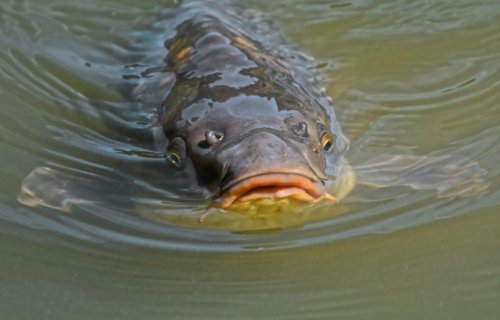EXETER, United Kingdom — The world has seen the turmoil that can be inflicted by a viral pandemic in 2020. Despite these lessons, government scientists in Australia are reportedly considering a perplexing plan to deal with their fish problem. Researchers say the nation has plans to release a virus into their freshwater supplies to kill off non-native carp. A study from the United Kingdom however warns this plan isn’t just dangerous, it won’t even solve the problem.
According to the study, Australian scientists have asked for government approval to unleash Koi Herpesvirus (KHV) in the country’s largest freshwater supply. Their hope is the virus will reduce the number of Common Carp; considered an invasive species in the land down under.
To their point, researchers from the Universities of Exeter and East Anglia say carp do cause significant ecological damage. When their population grows, carp can uproot vegetation, increase sediment in the water, and impact species native in that ecosystem. Despite an apparent need to cull this population, the study says poisoning them simply won’t work. Researchers say Common Carp will develop a resistance to this virus and grow back in a short time.
“Viral biocontrol is highly questionable and, as our study shows, it is unlikely to reduce carp numbers in the long term,” Exeter’s Dr. Jackie Lighten says in a university release.
“Our modeling shows that even under the most optimal conditions for biocontrol, populations quickly recover. Releasing KHV carries significant risks to human and ecosystem health, which likely outweigh the benefits, and we have previously urged further detailed research to avoid an unnecessary ecological catastrophe. Based on our findings, we believe the plan to control Australia’s carp with KHV is dead in the water.”
Carp-killing plan has serious holes in it
Dr. Lighten, who has already argued before the Australian Senate, adds the virus plan has left out some key research. The biosciences researcher says Australia’s National Carp Control Program (NCCP) is not taking into account models which show how effective KHV would be on carp. The study finds the global carp population actually has a resistance to this virus in their genetic makeup.
“We built a simulation model which allowed us to examine realistic interactions among carp, virus and disease resistance, to estimate how long it would take carp populations to recover even if 95% of them were wiped out,” Dr. Katie Mintram from the University of Exeter adds.
“We show that the biological characteristics of the carp, including their rapid breeding rates, allow infected populations to recover rapidly with individuals that are KHV resistant.”
Professor Cock van Oosterhout from the University of East Anglia says the Australian plan also didn’t model how virus resistance would factor in once KHV enters the fish population. The British team’s models are similar to ones currently helping scientists understand the spread of COVID-19. The researchers call them the “gold standard” for projecting the path of viruses throughout populations.
Throwing nature out of balance
The study warns that KHV may end up doing more harm than good in Australia. Dr. Lighten believes the main problem around the continent is how Australia’s freshwater supplies are utilized.
“Freshwater is in desperate shortage in large parts of Australia, so the first step must be to reduce the amount of water extracted for thirsty crops such as cotton,” the study author explains. “This would help to restore habitat for native species, thereby reducing habitat for carp.”
Lighten adds that injecting a foreign virus into the ecosystem may only throw nature further out of balance. Once the carp adapt to the pathogen, it could mean catastrophe for the native species around Australia.
“If the current global Covid-19 pandemic has reminded of anything, it’s that viruses are hard to predict and manage,” Lighten says. “It is madness that the release of a high pathogenic virus is being considered as one of the first steps to restore a damaged and fragile ecosystem.”
The study appears in the Journal of Applied Ecology.
